BosnMate
Gold Member
- Joined
- Sep 10, 2010
- Messages
- 6,916
- Reaction score
- 8,441
- Golden Thread
- 0
- Detector(s) used
- Whites MXT, Whites DFX, Whites 6000 Di Pro
- Primary Interest:
- Other
Stuff I've found
This is my second post, and I thought I'd show you folks some of the stuff I've found over the past 65 years. I don't have any new finds to post, in fact I haven't found a point for several years. In fact I haven't been to a place I'd be able to look for a long time, and I don't get around that well anymore. I'll start by going back to WWII. I was raised in the town of San Luis Obispo, Calif., so the artifacts found there were would have been Chumash. When the war started, the army sent troops to the beaches. There were lots of beaches and not a lot of soldiers in those days. But at Avila beach they dug and sandbagged some bunkers right on the beach, which of course only lasted until a storm hit at high tide. The army also didn't stay very long, perhaps weeks, at the most months, leaving behind sandbagged bunkers, which of course we kids played army in. There was what was left of a shell midden across the old railroad bridge on the left side of the road, right close to the Union Oil dock. The one lane road had replaced the railroad tracks, but the midden had been cut away by the rail road, and only a small portion was left The soldiers had dug and sandbagged a bunker, built with a roof over it, right in the middle of the midden. Us kids of course would climb up there and play. Besides the shells, the midden consisted of a very fine, powdery, very black dirt. My dad said it was the charcoal from years of camp fires, and I believe he was probably right. Every time we played there, I would find a few shell beads, which would go into my pocket and I'd take them home. My mother, bless her heart, would take them and put them in a safe place, only to give them back to me years later.
[attach 1]
So the beads you are looking at were collected by me in the mid 1940's, a few at a time, over at least 2 summers, perhaps more. These were either found on the trail in, or around the foxhole. In the upper right hand corner there is a dentillium shell, in later years I've found out that these shells are now extinct, and were only found in Puget Sound up by Seattle, WA, so between the one of two obsidian points and that shell, these people were trading long distances. At the bottom of the frame are abalone shell beads, or mother of pearl beads, manufactured out of abalone shell. Not seen in the frame are three white glass trade beads that I also found and have no idea what happened to them. During that time of playing soldier we also found human remains that the soldiers had dug out and then included in the berm around the foxhole. The hole itself was probably 3 feet deep, and it hadn't found the bottom of the midden. The skull was full of the black soil, badly broken up, the parts held in place by the dirt. As I recollect none of us kids thought much of it, but my mother insisted that we re-bury it where we found it, except we never had a shovel up there, so I suspect that it ended up under a sandbag, but I don't remember for sure.
[attach 2]
Then when I was a bit older and the foxhole was only a shallow dip in the center of the midden, I went up there to specifically look for "arrowheads." I checked out the top, mostly covered with grass, and I didn't find anything, so I walked along the edge of the midden, where the railroad had made the cut, and which was a straight up and down cut bank. The above photo shows one of the items I found at that time. It's a small abalone shell, with the midden soil still attached to it, that was sticking out of the bank, probably two feet or so deep in the midden.
[attach 3]
This is the back side of the shell. The next photo is the front side, it's a close up to showing the mother of pearl showing through the dirt, and if one looks very close, the cut marks where the abalone meat was removed from the shell. This was the only full shell that I ever found there.
[attach 4]
I don't recall ever finding an "arrowhead" in that midden, although there were plenty of broken chunks and flakes of rock, there was nothing that I would have identified even as a broken tool at that time. The other thing I found that day was a flat stone pictured below. It was in about the same location as the abalone shell, and when I pulled it out of the edge of the bank, it was covered with grease that had caked the black dirt onto the rock, probably between an 1/8 and a 1/4 inch thick. It was oily to touch and, being a dumb kid, I took it home and used dish soap to wash it all off. I think it would be much more interesting with that stuff left on it. I don't know what kind of stone it is, but it's soft, I don't think sandstone, but kind of chalky, soft and light weight. Anyhow, again, if one will look very close, the cut marks can be seen in the stone, where they butchered fish and shell fish, perhaps sea-lions and other types. They were living in a spot where they were right in the middle of huge supplies of easily harvested food. I'm assuming it's an artifact, because of where I found it and the circumstances of the find. Any other place I'd call it just a rock.
[attach 5]
[attach 6]
[attach 7]
[attach 8]
I think that's all the photos I'm allowed to attach to one post, will be posting more of additional finds. Oh yeah, my mother passed several years ago at 92, and the last time I was down to San Luis Obispo for a visit, I drove over to Avila. There is a new bridge, and the road has been widened and paved. The shell midden is gone, lost to progress.
This is my second post, and I thought I'd show you folks some of the stuff I've found over the past 65 years. I don't have any new finds to post, in fact I haven't found a point for several years. In fact I haven't been to a place I'd be able to look for a long time, and I don't get around that well anymore. I'll start by going back to WWII. I was raised in the town of San Luis Obispo, Calif., so the artifacts found there were would have been Chumash. When the war started, the army sent troops to the beaches. There were lots of beaches and not a lot of soldiers in those days. But at Avila beach they dug and sandbagged some bunkers right on the beach, which of course only lasted until a storm hit at high tide. The army also didn't stay very long, perhaps weeks, at the most months, leaving behind sandbagged bunkers, which of course we kids played army in. There was what was left of a shell midden across the old railroad bridge on the left side of the road, right close to the Union Oil dock. The one lane road had replaced the railroad tracks, but the midden had been cut away by the rail road, and only a small portion was left The soldiers had dug and sandbagged a bunker, built with a roof over it, right in the middle of the midden. Us kids of course would climb up there and play. Besides the shells, the midden consisted of a very fine, powdery, very black dirt. My dad said it was the charcoal from years of camp fires, and I believe he was probably right. Every time we played there, I would find a few shell beads, which would go into my pocket and I'd take them home. My mother, bless her heart, would take them and put them in a safe place, only to give them back to me years later.
[attach 1]
So the beads you are looking at were collected by me in the mid 1940's, a few at a time, over at least 2 summers, perhaps more. These were either found on the trail in, or around the foxhole. In the upper right hand corner there is a dentillium shell, in later years I've found out that these shells are now extinct, and were only found in Puget Sound up by Seattle, WA, so between the one of two obsidian points and that shell, these people were trading long distances. At the bottom of the frame are abalone shell beads, or mother of pearl beads, manufactured out of abalone shell. Not seen in the frame are three white glass trade beads that I also found and have no idea what happened to them. During that time of playing soldier we also found human remains that the soldiers had dug out and then included in the berm around the foxhole. The hole itself was probably 3 feet deep, and it hadn't found the bottom of the midden. The skull was full of the black soil, badly broken up, the parts held in place by the dirt. As I recollect none of us kids thought much of it, but my mother insisted that we re-bury it where we found it, except we never had a shovel up there, so I suspect that it ended up under a sandbag, but I don't remember for sure.
[attach 2]
Then when I was a bit older and the foxhole was only a shallow dip in the center of the midden, I went up there to specifically look for "arrowheads." I checked out the top, mostly covered with grass, and I didn't find anything, so I walked along the edge of the midden, where the railroad had made the cut, and which was a straight up and down cut bank. The above photo shows one of the items I found at that time. It's a small abalone shell, with the midden soil still attached to it, that was sticking out of the bank, probably two feet or so deep in the midden.
[attach 3]
This is the back side of the shell. The next photo is the front side, it's a close up to showing the mother of pearl showing through the dirt, and if one looks very close, the cut marks where the abalone meat was removed from the shell. This was the only full shell that I ever found there.
[attach 4]
I don't recall ever finding an "arrowhead" in that midden, although there were plenty of broken chunks and flakes of rock, there was nothing that I would have identified even as a broken tool at that time. The other thing I found that day was a flat stone pictured below. It was in about the same location as the abalone shell, and when I pulled it out of the edge of the bank, it was covered with grease that had caked the black dirt onto the rock, probably between an 1/8 and a 1/4 inch thick. It was oily to touch and, being a dumb kid, I took it home and used dish soap to wash it all off. I think it would be much more interesting with that stuff left on it. I don't know what kind of stone it is, but it's soft, I don't think sandstone, but kind of chalky, soft and light weight. Anyhow, again, if one will look very close, the cut marks can be seen in the stone, where they butchered fish and shell fish, perhaps sea-lions and other types. They were living in a spot where they were right in the middle of huge supplies of easily harvested food. I'm assuming it's an artifact, because of where I found it and the circumstances of the find. Any other place I'd call it just a rock.
[attach 5]
[attach 6]
[attach 7]
[attach 8]
I think that's all the photos I'm allowed to attach to one post, will be posting more of additional finds. Oh yeah, my mother passed several years ago at 92, and the last time I was down to San Luis Obispo for a visit, I drove over to Avila. There is a new bridge, and the road has been widened and paved. The shell midden is gone, lost to progress.
Attachments
-
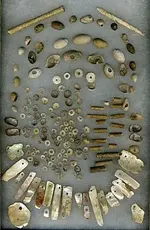 CalifBeads1B.webp35.4 KB · Views: 458
CalifBeads1B.webp35.4 KB · Views: 458 -
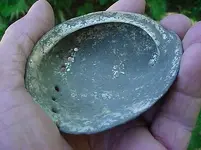 DSC00009.webp31.8 KB · Views: 450
DSC00009.webp31.8 KB · Views: 450 -
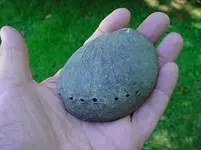 DSC00010.webp26.5 KB · Views: 454
DSC00010.webp26.5 KB · Views: 454 -
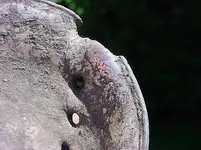 DSC00012.webp37.9 KB · Views: 439
DSC00012.webp37.9 KB · Views: 439 -
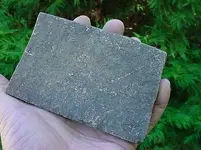 DSC00014.webp41.1 KB · Views: 458
DSC00014.webp41.1 KB · Views: 458 -
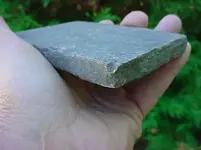 DSC00015.webp15.9 KB · Views: 437
DSC00015.webp15.9 KB · Views: 437 -
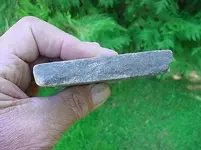 DSC00016.webp28.3 KB · Views: 448
DSC00016.webp28.3 KB · Views: 448 -
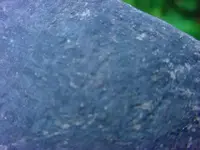 DSC00017.webp26.8 KB · Views: 453
DSC00017.webp26.8 KB · Views: 453 -
 CalifBeads1B.webp35.4 KB · Views: 452
CalifBeads1B.webp35.4 KB · Views: 452 -
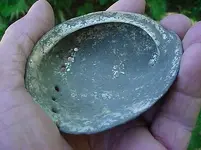 DSC00009.webp31.8 KB · Views: 452
DSC00009.webp31.8 KB · Views: 452 -
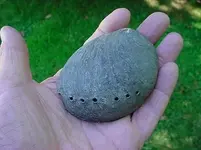 DSC00010.webp26.5 KB · Views: 435
DSC00010.webp26.5 KB · Views: 435 -
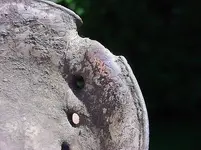 DSC00012.webp37.9 KB · Views: 444
DSC00012.webp37.9 KB · Views: 444 -
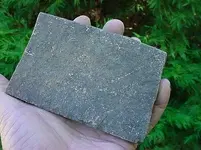 DSC00014.webp41.1 KB · Views: 437
DSC00014.webp41.1 KB · Views: 437 -
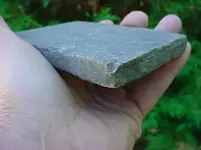 DSC00015.webp15.9 KB · Views: 440
DSC00015.webp15.9 KB · Views: 440 -
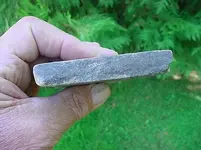 DSC00016.webp28.3 KB · Views: 441
DSC00016.webp28.3 KB · Views: 441 -
 DSC00017.webp26.8 KB · Views: 443
DSC00017.webp26.8 KB · Views: 443
Upvote
0



